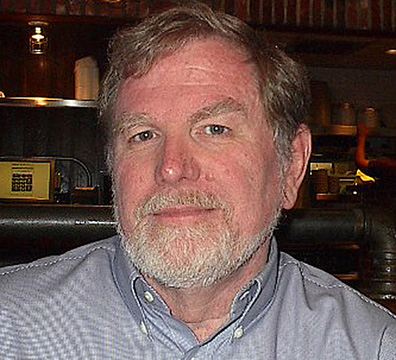
Doug Horne, author of "Inside the Assassination Record Review Board"
Most JFK Medical Evidence Would Not Be Admissible at Trial
by Douglas P. Horne
Author of “Inside the Assassination Records Review Board”
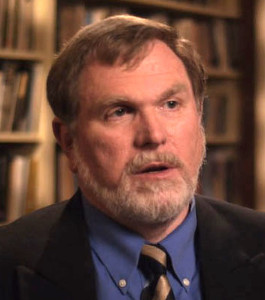 Douglas P. Horne – Author of “Inside the Assassination Records Review Board”
Douglas P. Horne – Author of “Inside the Assassination Records Review Board”
As I have often stated (and I know David Lifton and I share this view), the real reason the JFK medical evidence “doesn’t come together” and present any understandable pattern—that is, the reason this body of evidence, when viewed as a whole, in its totality, is so severely conflicted—is because there is “fraud in the evidence.” Please allow me to summarize what I mean by this. My views below are a distillation of the conclusions I reached about the JFK medical evidence following my three years of service with the Assassination Records Review Board (ARRB), from August of 1995 through September of 1998.
-The extant autopsy report in the National Archives is only the THIRD written version of the JFK autopsy report. The unsigned first draft of the autopsy report—and virtually all of the original handwritten notes—were burned by the chief pathologist, Dr. James J. Humes, in his fireplace on November 24, 1963. (Humes admitted this, under oath, to the ARRB during his 1996 sworn deposition.) The first SIGNED version (described in an April 1965 Secret Service inventory as the original autopsy report, signed by Dr. James J. Humes)—which constituted the second written version—was transferred to the control of Robert F. Kennedy by the Secret Service in April of 1965, and was never returned to the U.S. government when the Kennedy family was forced to relinquish the autopsy materials to the National Archives in late October of 1966. (All of the so-called “paragraph 9 materials” on the April 1965 inventory—including what was left of JFK’s brain, and the first signed autopsy report—were retained by RFK when the Kennedy family Deed of Gift was executed in October 1966, and their whereabouts are not definitively known today.) The Secret Service, which had given the first signed version to RFK in April of 1965, turned over ANOTHER JFK autopsy report (this one signed by all three pathologists) to the National Archives in October of 1967. This receipt trail, therefore, makes the extant autopsy report in the National Archives, at best, the THIRD WRITTEN VERSION of this crucial medico-legal document. Under these circumstances, no judge in his right mind would accept the extant autopsy report into evidence. Indeed, as Chapter 11 of my book reveals, each new version of the autopsy report was generated because there were changes being made to its content each step along the way. The official government conclusions about JFK’s wounds proved quite malleable between November 22nd and December 11th of 1963. In Chapter 11 of my book, I explain what those changes in content probably were.


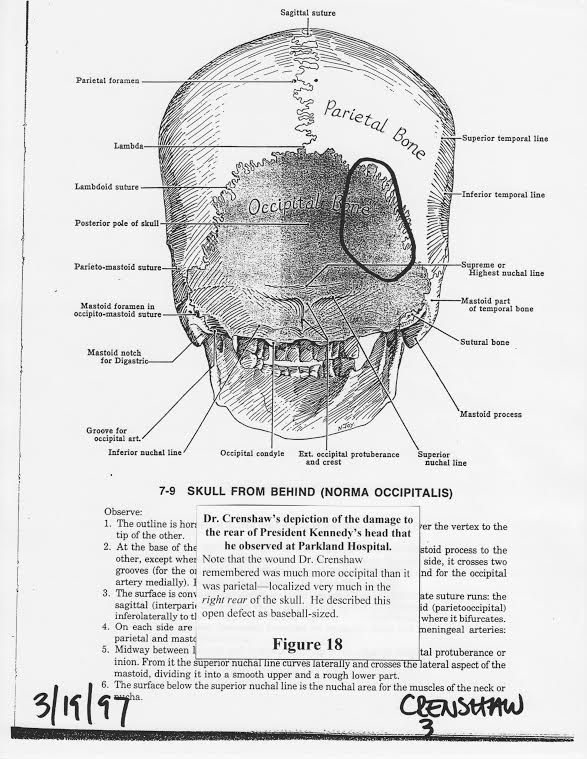

-The autopsy photographs of JFK’s body in the official collection would face serious challenges at any trial; most of them—indeed, perhaps all of them—would not be admitted into evidence. As I discuss in Chapter 4 of my book, about 18 different views taken of President Kennedy’s body at the autopsy never made it into the official collection; this is proof that the collection has been culled, and is incomplete. (Each “view” usually consisted of multiple images—at least two black and white images, and at least two color images.) Furthermore, ALL of the photographs in the official collection at the National Archives are in serious disagreement, in one way or another, with the wounds to President Kennedy universally observed at Parkland Hospital in Dallas the day of his assassination. But it gets worse: many of the “autopsy photos” in the official collection are also at odds with what many autopsy witnesses recall. The most significant missing images include those of metal probes (denoting points of entrance and exit, and trajectories) in the body; numerous images taken of the large exit wound in the right rear of JFK’s head (which was recalled by everyone at Parkland Hospital in Dallas, and by most autopsy witnesses); photographs of a bruise in the interior chest, purportedly at the apex of the pleural dome above the right lung; and close-ups of the exterior and interior of an entrance wound in the rear of the skull. The most controversial autopsy images are those showing the rear of President Kennedy’s head to apparently be intact; they are not only contradicted by all of the Parkland Hospital treatment reports from the day of the assassination, but they were disowned—impugned—under oath, by both of the former FBI agents present at the autopsy (James Sibert and Francis O’Neill) during their 1997 ARRB depositions. The extensive damage shown in the autopsy photographs to the top and right side of President Kennedy’s cranium bear no relation whatsoever to the localized, avulsed wound (interpreted as a blowout, or exit wound) in the right rear of his head seen in Dallas; no one at Parkland Hospital who wrote a report the day of JFK’s assassination described any damage to the top, or right side, of his head. ARRB interviews of Nurse Audrey Bell and Dr. Charles Crenshaw in 1997 definitively established that they saw no visible damage whatsoever to the top or right side of his head at Parkland Hospital.
-At least 5 or 6 skull x-rays were taken at JFK’s autopsy (per interviews given by both Jerrol Custer, the lead Navy x-ray technician, and Dr. Ebersole, the Navy radiologist at the autopsy); and yet, only THREE (3) skull x-rays were placed into the official collection. This means that at least two were suppressed, and are missing today. But it gets worse. The pioneering work of Dr. David Mantik, M.D., PhD.—who is a radiation oncologist and who is qualified to read and interpret x-rays—has established (through his nine visits to the National Archives to examine the skull x-rays, using the technique of optical densitometry) that each of the 3 extant skull x-rays is NOT an original, but rather, is an ALTERED COPY FILM. In other words, there is serious fraud in the x-ray evidence from the autopsy. You can read about this in Chapter 5 of my book.
-The brain photos in the official autopsy collection in the National Archives CANNOT BE IMAGES OF PRESIDENT KENNEDY’S BRAIN, and are demonstrably images of someone else’s brain. In 1996, while on the staff of the ARRB, I analyzed all previous testimony and statements made by key participants at Bethesda Naval Hospital regarding JFK’s brain, and established that there were TWO (2) post-autopsy brain examinations following the Friday night autopsy on JFK’s body, not just one brain exam following the autopsy, as there should have been if nothing had been amiss. The images taken of JFK’s brain at the supplemental brain examination on 11/25/63 were suppressed, and never made it into the official record—presumably because his brain demonstrated damage from frontal shots (which of course was contrary to the official cover story that the President was shot only from behind, from the TSBD). A SECOND supplemental brain exam was conducted sometime between 11/29/63 and 12/02/63, and those images (of a fraudulent specimen—someone else’s brain) are what made it into the official autopsy collection. [This was not difficult to do, since Bethesda Naval Hospital was a teaching hospital and conducted public “brain cuttings” every week or two with the specimens on-hand.] The brain images in the official collection show damage that appears generally consistent with a shot from behind, and yet are entirely at odds with both the Parkland Hospital observations, and with the JFK skull x-rays! Autopsy photographer John Stringer disowned the brain photos at his 1996 ARRB deposition because the photos in the Archives are NOT on the type of film he used at the autopsy, and also because the many photos he shot of the serially sectioned brain (coronal sections) are not present in the Archives. Furthermore, he shot NO basilar views (from underneath—the underside of the brain), yet half of the Archives brain photos ARE basilar views. But it gets worse. Former FBI agent Francis O’Neill (who was at the JFK autopsy) testified during his 1997 ARRB deposition that more than one half of JFK’s brain was missing when he saw the brain removed during the autopsy on the body, and yet in his opinion the brain photos in the Archives show “almost a complete brain,” with way too much mass present. O’Neill recalled significant damage and missing tissue in the right rear of the brain (as did mortician Tom Robinson), and yet the brain photos in the Archives unaccountably show the right cerebellum to be completely intact. Chapter 10 of my book is devoted to the brain photos in the Archives; I consider the suppression of the true photos of JFK’s brain, and the dishonest substitution of false images (of a substitute brain), to be the most significant evidence of a U.S. government cover-up in the Kennedy assassination. Only the U.S. government had access to the body; had custody of the brain, which was examined following the autopsy on the body; created the autopsy images; and decided which brain photos made it into the official collection, and which brain photos did not. Neither Khrushchev’s Soviet Union, nor Castro’s Cuba, nor the Mafia had access to any of this evidence.
-Both FBI agents who were at President Kennedy’s autopsy (agents James Sibert and Francis O’Neill), as well as Navy enlisted autopsy technicians Paul O’Connor and James Jenkins, observed a sharp downward angle for the shallow bullet track in JFK’s upper back. The location of the upper thorax wound, combined with this sharp downward angle, was entirely inconsistent with the absurd single-bullet theory later invented by Dr. James J. Humes and Arlen Specter. Both O’Connor and Jenkins observed the use of metal probes in this shallow bullet track, and both recalled that the probing of the back wound made an impression on the intact pleura in the vicinity of the descending aorta (below the heart). This is one of many elegant proofs that the single bullet theory is nonsense. Without the single bullet theory, a lone assassin is impossible. The single bullet theory could certainly be introduced and argued by the prosecution at a trial, but it could easily have been discredited by these observations alone. (In addition, the provenance, or chain-of-custody of CE 399—the “magic bullet”—is seriously suspect; and the pristine condition of the nose of the bullet is entirely inconsistent with the damage Arlen Specter claimed it caused to Governor Connally’s rib and right wrist.)
-I have concluded that the small, approximately 5 mm wide puncture in the front of JFK’s neck, described as an apparent entrance wound in the throat by the Parkland Hospital treatment staff, was surgically tampered with at Bethesda Naval Hospital, prior to the start of the official autopsy at 8 PM on 11/22/63. The extant autopsy photos depict a large, unseemly, and sloppy “gash” in the throat, not the small, round entrance wound seen at Parkland in Dallas. When JFK’s body left Dallas, the entrance wound in his throat could still be seen—it had not been obliterated by the tracheotomy incision—and the very small and neat “trach” incision (only 2.5 to 3 cm wide) that bisected it had closed of its own volition, and in no way resembled the “gash” seen in the extant autopsy photos. The autopsy report describes the “trach” incision as 6.5 cm wide, with “widely gaping, irregular edges;” and in his Warren Commission testimony, Dr. Humes said it was actually 7 to 8 cm wide (thus expanding the width of 6.5 cm he reported in the autopsy protocol). Dr. Perry’s “trach” incision in Dallas was no more than 3 cm wide, at the most. During the illicit, post-mortem surgery that occurred at Bethesda Naval Hospital a brazen attempt was made to obliterate evidence of a frontal shot (which was inconsistent with the legend of a lone assassin firing from behind), and to subsequently characterize the ensuing man-made wound as a sloppy tracheotomy. After the autopsy was concluded, Dr. Humes dishonestly redescribed this gash, or sloppy tracheotomy, as a bullet exit wound, in his final rewriting of the autopsy report.
-JFK’s body actually arrived at the loading dock of the Bethesda Naval Hospital morgue 20 minutes PRIOR TO the motorcade from Andrews AFB (which was transporting the bronze ceremonial Dallas casket in a light gray Navy ambulance). President Kennedy’s body also arrived in the wrong kind of automobile (a black hearse, not a light gray Navy ambulance) and in the wrong kind of casket (a cheap aluminum shipping casket, not the bronze ceremonial coffin shipped from Dallas on AF1). Navy “Chief of the Day” HM1 Dennis David, and Donald Rebentisch (a member of his casket offload working party that night), both vividly recall the arrival of the shipping casket in the black hearse, and Dennis David has confidently insisted over many years that it arrived well prior to the motorcade’s arrival from Andrews. Marine Sergeant Roger Boyajian—in charge of physical security that night at the Bethesda morgue—in his after-action report of 11/26/63, recorded that this casket arrived at 6:35 PM (which was twenty minutes prior to the well-documented arrival time of the Andrews AFB motorcade at 6:55 PM). Dr. Boswell, one of the two Navy pathologists at the autopsy, confirmed to Dennis David following the autopsy that President Kennedy had indeed been inside the shipping casket that David and his working party had offloaded from the black hearse early that evening. The key to resolving the conflicts in the JFK medical evidence lies in figuring out what happened to President Kennedy’s body at Bethesda during this “missing time”—during the 85 minutes between the time his body actually arrived at 6:35 PM, and the time his official autopsy began at 8:00 PM. My conclusion is that clandestine, illicit post-mortem surgery was performed on both his throat wound, and on his cranium. [The ARRB staff found two witnesses to the post-mortem surgery on the cranium: mortician Tom Robinson, and Navy x-ray technician Ed Reed.] In each case, the goal was to remove evidence of frontal shots (both bullet fragments and entrance wounds) from the body, so that when the autopsy of record was performed later that evening before a large audience, no evidence would be found in the body that would contradict the official cover story of “three shots from behind.” This brutal, hurried, and illegal post-mortem surgery (which grossly expanded the existing wounds so that bullet fragments could be removed from the body) also altered the “geometry of the shooting,” as David Lifton succinctly explained in his 1981 book, Best Evidence. This surgical expansion of the throat wound and cranial wounds was subsequently represented (falsely) as “exit wounds from shots fired from behind.” The cranial surgery explains why the massive damage to the top and the right side of the skull in the many extant autopsy photos shows no resemblance whatsoever to the localized head wound (in the right rear of the skull) observed in Dallas. At the very least, this interference with the “crime scene” (i.e., the body of the slain President) was obstruction of justice. And without any doubt whatsoever, it invalidated all of the results that emanated from the official autopsy proceeding later that evening.
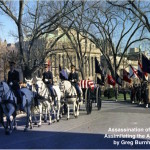
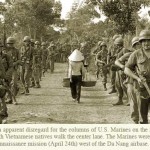
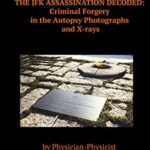
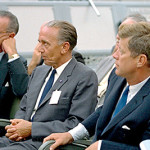
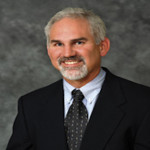
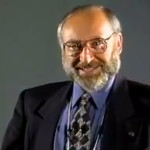
Irish film-maker Shane O’Sullivan interviewed me about the state of the medical evidence in August of 2013; he has assembled a 75-minute video clip in which I comment on the autopsy photographs, skull x-rays, and the multiple casket entries at Bethesda Naval Hospital on 11/22/63.
The link to the Vimeo 75-minute interview clip is provided here (and the fee allows one full week of access):
https://vimeo.com/ondemand/jfk
were there any witnesses to the re-introduction of the body into the Dallas casket, and the removal of said casket into the Navy ambulance at the loading dock so the casket could be driven around to the front of the hospital and found by the Joint Casket team? Did any of the Navy personnel in the morgue see that or were they all dismissed from that area so they would not have been able to observe it.
Good Day Doug,
Thank You for your continuing dedications to illuminate The Truth’s of this (still, officially, F.B.I.-unsolved) case.
From its start I have referenced your work permanently within my “Men of Courage” President Kennedy assassination/elimination homepages website.
I am very interested in learning, based on your theories, what is your cogent shots-scenario + assassins locations that solidly fit together with your theories?
Thanks again.
Best Regards in Research,
Don
I suspect much of the medical evidence would be admissible but the questions raised by Doug would go towards weight given to the evidence. There is alot of forensic evidence that would likely not have been admissible and of course all of Marina’s testimony would not have been admissible under the Spousal Immunity rule in effect at that time in Texas…and without her testimony, the government’s case would have likely fallen apart……